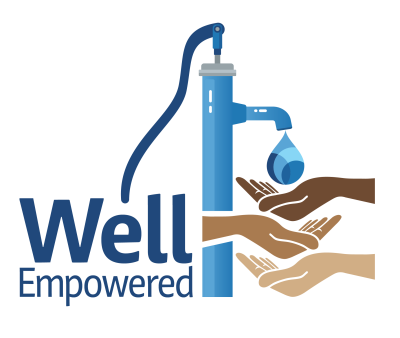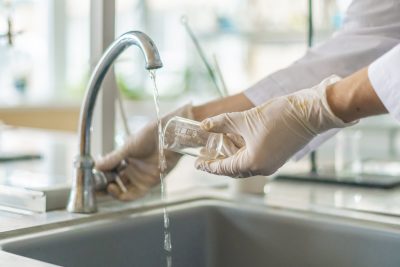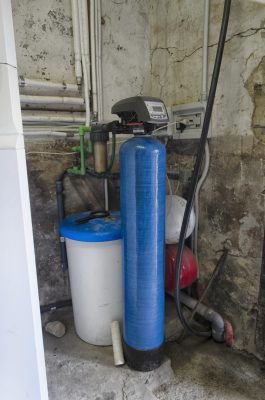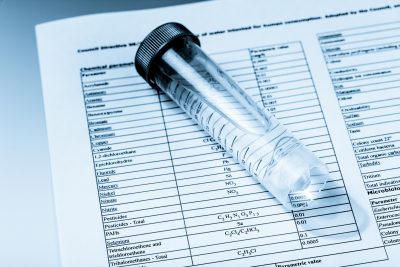All About Well Testing
 It is important to test your well for contaminants to maintain safe drinking water. There are many different ways your private well can become contaminated. Some possible factors include the geology, land use, and hazardous spills that have happened near your well.
It is important to test your well for contaminants to maintain safe drinking water. There are many different ways your private well can become contaminated. Some possible factors include the geology, land use, and hazardous spills that have happened near your well.
UNC SRP researchers are studying contamination from toxic metals in well water across NC, including arsenic, lead, cadmium, and more. Keep reading to learn how to test your well, what to test for, and how often you should test.
How often should I test my well?
Depending on the contaminant, your well should be tested every year, every two years, and again every five years for the following:
 Every Year
Every Year
Test for total and fecal coliform bacteria.
If a pregnant woman or infant is drinking from the well, annual testing for manganese, nitrates, and nitrites is also recommended.
Additionally, yearly testing for inorganic metals may be needed if:
- Other wells in your neighborhood are contaminated
- You notice a change how your water tastes, looks, or smells
- There is a toxic spill near your home
- People in the home have unexplained illnesses
- There were recent repairs or replacements to the well
Finally, you should test your well if there are no records of previous testing.
Every Two Years
Test for inorganic metals, (such as lead and arsenic), nitrates, and nitrites.
Every Five Years
Test for pesticides and volatile organic compounds (VOCs), which are industrial chemicals used in manufacturing.
How do I request testing?
 Contact your local county health department’s Well Specialist or a NC Certified Lab.
Contact your local county health department’s Well Specialist or a NC Certified Lab.- Request a test: you will have a choice to test for several contaminants. The standard inorganic metal test (panel) includes most toxic metals. In some counties, you can also request extra testing for hexavalent chromium, vanadium, nitrates/nitrites, radioactive metals, pesticides, and PFAS.
- Take the sample from where you get your drinking water. Testing can be conducted at the wellhead or at the tap. We recommend you sample your water at the tap where you drink most often. Testing at the wellhead can miss contamination in the home (or the pipes between the well and the home, called premise plumbing).
- Tell your county well specialist that you want to do a “first draw” sample. This sample is best taken in the morning because it requires that you don’t use the water in your home for at least 6 hours before taking a sample. When you are ready, be sure to capture the “first draw” of water.
What will my results look like?
- When the health department returns your results (usually between 2-3 weeks), you will get a document that look like this example from the State Laboratory of Public Health.
- If your well is contaminated, you will get a “Health Risk Evaluation” (HRE), that looks like this example from NC DHHS.
What if I find contamination?

Example of water treatment equipment
- Well users must decide what level of risk is “safe” for their home based on their well test results.
- A short-term solution may be a pitcher filter, such as the Zerowater filter. These filters have been shown to remove many toxic metals (arsenic, lead, manganese, and hexavalent chromium). They work well, are affordable, and are easy to maintain.
- For long term solutions, the treatment system you’ll need depends on the kind of contamination you have. The NC Division of Public Health has developed a guide for selecting the right type of treatment system for your home.
How do I get help?
- If you have a doctors note, you may be able to request a free test from your health department.
- If you find contamination and your annual household income does not exceed 300% of the federal poverty level, you can apply for support from the Bernard Allen Fund. Contact your county health department for more information.
- Low-cost loans may be available from the Southeast Rural Community Assistance Project, Inc.
What contaminants are in my area?

UNC SRP researchers developed resources to display well water sampling data collected by the NC Department of Health and Human Services (NC DHHS) from October 1998 – May 2019. Visit the Well Water Contaminants page to search by contaminant or by county and view the concentrations of heavy metals that have been detected in private well water in each of North Carolina’s 100 counties.
For additional information on arsenic, cadmium, lead, and manganese, check out NC ENVIROSCAN. This mapping tool allows users to visualize trends, including sociodemographic information, environmental justice indicators, and health outcomes, across NC.
Additional information about private wells
- Private Well Water and Your Health NC Division of Public Health
- On-Site Water Protection Branch, Private Water Supply Well Program NC Division of Public Health
- Drinking Water from Household Wells US Environmental Protection Agency
Learn why we are studying well water
Learn how contaminated water can impact your health
Access lessons to bring current research into the classroom
View participant resources from the Well Empowered study
View maps and tables showing contaminants found in private wells in NC
Discover how the UNC SRP works with communities
Confused about a term on this page? Check out our frequently used terms page to learn more!
